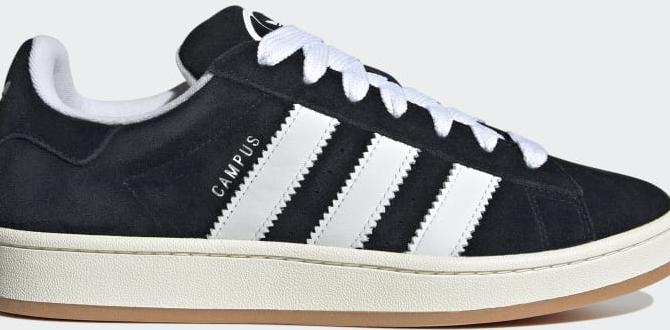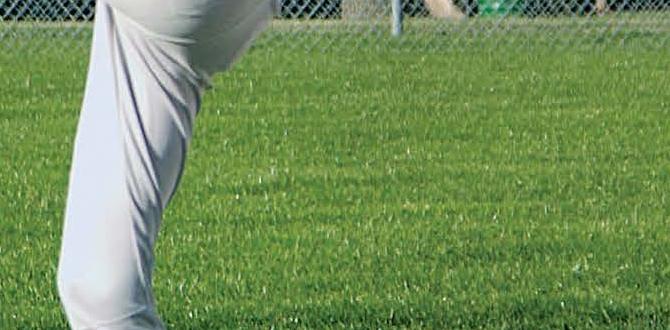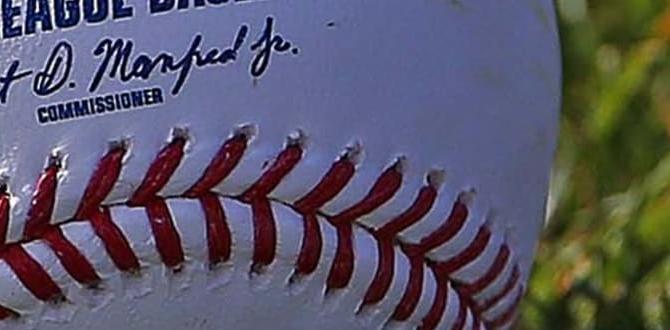Easton Youth Catcher Gear is crucial for protecting young players behind the plate, ensuring they can focus on the game with confidence. This guide breaks down essential protection components, helping players and parents choose the right gear for safety and performance.
Hey everyone, John P. Miller here from FriskMode! Ever watch a young catcher step up to the plate and notice them wince after blocking a pitch, or maybe you’ve seen a parent wringing their hands at the thought of their child facing fastballs? It’s completely normal to feel a bit anxious about catcher safety, especially with all the moving parts and high-speed action. The good news is that with the right equipment, specifically well-fitting and protective catcher’s gear, those worries can fade away. We’re going to walk through exactly what your young slugger needs to stay protected and play their best. Get ready to learn how to pick out gear that makes every play safe and sound!
Why Catcher Gear Matters for Young Players
At FriskMode, we believe that the right gear is more than just protective padding; it’s a confidence booster. For a youth catcher, stepping behind home plate is a big responsibility. They’re the captain of the infield, calling signals, and often in the direct line of fire for pitches and foul balls. Without proper gear, the risk of injury increases significantly, which can lead to missed games, fear of the position, and a less enjoyable experience. Easton is a top name in baseball equipment, and their youth catcher’s gear is designed with young players’ unique needs in mind: protecting them while allowing for agility and a full range of motion. This isn’t just about safety; it’s about empowering them to play with courage and skill.
Understanding the Essential Easton Youth Catcher Gear Components
When we talk about catcher’s gear, we’re referring to a complete set of protective equipment. Each piece is designed to safeguard a specific part of the body from the impacts common in baseball. For young players, this protection is even more vital as they develop their skills and learn the nuances of the catcher position. Easton offers a range of youth gear that covers all the bases. Let’s break down each critical component:
1. The Catcher’s Mask/Helmet
This is arguably the most critical piece of catcher’s gear. The mask (often integrated into a helmet for youth players) protects the face, head, and jaw from errant pitches, foul tips, and collisions.
Key Features to Look For:
Padding: High-density foam padding is essential for absorbing impact. Look for removable and washable padding for hygiene.
Fit: The mask should fit snugly, not too tight but without excessive movement. It should cover the forehead, cheeks, and chin adequately.
Visibility: Good peripheral vision is crucial for a catcher to see the ball, the runners, and the field. The cage design should facilitate this.
Ventilation: Some youth helmets have vents to help keep the player cool during long games or practices.
Certification: Check for safety certifications, such as NOCSAE (National Operating Committee on Standards for Athletic Equipment), which ensures the gear meets rigorous safety standards. Easton gear typically adheres to these.
2. The Chest Protector
This piece of equipment covers the torso, protecting the chest, ribs, and abdomen from direct impact. A good chest protector should absorb shock while staying relatively flexible.
What to Expect from Easton Youth Chest Protectors:
Coverage: It should extend from the collarbone down to the stomach.
Padding: Multi-density foam or strategically placed impact-absorbing materials are key.
Adjustability: Straps allow for a secure fit and can be adjusted as the player grows or for layering under uniforms.
Flexibility: While protective, it shouldn’t be so stiff that it hinders a catcher’s ability to crouch or throw.
3. Shin Guards
Shin guards protect the shins, knees, and feet from foul balls, wild pitches, and collisions at the plate. They are designed to be sturdy and offer full coverage.
Essential Elements of Shin Guards:
Knee Cap: A well-designed knee cap is vital for protecting the kneecap itself and extending protection down the shin.
Ankle/Foot Protection: Many youth shin guards include a built-in toe cap or a detachable piece to protect the front of the foot.
Straps: Secure, easy-to-adjust straps keep the guards in place. They should be comfortable enough not to chafe.
Coverage Area: Extended coverage is better. Look for guards that go all the way down to the shoe and offer good wrap-around protection.
Ventilation: Some designs include venting to prevent overheating.
4. The Catcher’s Mitt
While not always considered “gear” in the same way as pads, the catcher’s mitt is a specialized piece of equipment that is absolutely essential. It’s larger and more padded than a fielder’s glove, designed to help catch high-velocity pitches and protect the hand.
What Makes a Good Youth Catcher’s Mitt:
Size: Youth mitts are typically sized according to age group, usually ranging from 31-33 inches. Easton offers specific youth models that are appropriately sized.
Padding: Deep pocket and substantial padding are crucial for shock absorption and creating a secure pocket.
Flexibility: A mitt that is too stiff can be difficult for a young player to close. Look for mitts that are already broken in or are made from softer leather that will break in easily.
Webbing: The web of the mitt is designed to create a large, soft target for the pitcher.
Easton’s Approach to Youth Catcher Gear
Easton has established a reputation for innovation and quality in baseball equipment. For their youth catcher’s gear, they focus on a few key principles that make a difference for developing players:
Protection & Safety: Paramount is ensuring young athletes are shielded from the impacts of the game. Easton incorporates advanced materials and designs to maximize shock absorption and coverage.
Fit & Comfort: Gear that doesn’t fit well can be a distraction and even a safety hazard. Easton youth gear is designed to be lightweight, adjustable, and ergonomically suited for younger bodies, allowing for movement without sacrificing protection.
Durability: Youth gear often takes a beating. Easton uses robust materials that can withstand the rigors of frequent play, ensuring the gear lasts.
Agility & Performance: Protection shouldn’t hinder a player’s ability to perform. Easton designs its gear to allow for a free range of motion—crucial for catching, blocking, and throwing quickly.
Easton Youth Catcher’s Gear Sets
Easton often offers complete catcher’s gear sets for youth players. These sets typically include a helmet/mask, chest protector, and shin guards. Buying a set can be a convenient and cost-effective way to ensure all the major protective pieces are designed to work together and offer a consistent level of protection.
Pros of Easton Youth Catcher Gear Sets:
Coordinated Protection: All pieces are designed to fit and function as a system.
Value: Often more economical than purchasing individual components.
Convenience: Simplifies the shopping process for parents and coaches.
Brand Consistency: Ensures the quality and design philosophy of Easton across all protective elements.
Sizing and Fitting Easton Youth Catcher Gear: A Step-by-Step Guide
Getting the right fit for catcher’s gear is non-negotiable. Gear that is too big can shift, leading to gaps in protection or hindering movement. Gear that is too small can be uncomfortable, restrict motion, and fail to offer adequate coverage. Here’s how to ensure a proper fit for Easton’s youth catcher gear:
Step 1: Measure Your Player
Before you even look at specific models, grab a flexible measuring tape.
Chest Protector: Measure from the base of the neck (where the collarbone meets) down to the waist. Easton will provide sizing charts based on these measurements.
Shin Guards: Measure from the middle of the kneecap down to the ankle bone. This is a key measurement to ensure they cover the entire shin and boot area.
Helmet/Mask: While many youth helmets are adjustable, some have specific head circumference measurements. Measure around the widest part of the head, just above the ears.
Step 2: Consult Sizing Charts (Easton specific)
Once you have your measurements, head to Easton’s official website or the product listing page for the gear you’re interested in. They will have detailed sizing charts. Compare your measurements to the recommended sizes.
Step 3: Focus on Key Fit Points for Each Piece
Mask/Helmet:
It should sit level on the head, not tilted back or forward.
The chin strap should be snug but not constricting.
Visually, the cage should align properly with the eyes, offering clear sightlines.
Chest Protector:
It should cover the entire torso area from the neck down to the stomach.
The shoulder straps should allow for comfortable adjustment, preventing the protector from riding up or drooping.
Ensure there are no gaps between the bottom of the protector and the top of the shin guards when the player is in a crouch.
Shin Guards:
The knee cap should fit securely over the player’s knee.
The shin guard should extend down to cover the top of their cleats or shoes.
When the player bends their knees, the guards should stay in place and not rotate or slip.
Adjustable straps are key here for a custom, secure fit.
Step 4: Test with Movement
Have the player put on the gear and mimic catcher movements:
Crouch down low.
Stand up quickly.
Twist their torso.
Simulate throwing a ball.
The gear should stay securely in place throughout these movements. Any significant shifting, pinching, or pinching indicates a fit issue.
Step 5: Consider Growth
While you want gear that fits well now, it’s also wise to consider if there’s a little room for growth. However, never sacrifice a proper fit for the sake of a season or two of growth, as ill-fitting gear compromises safety and performance. Easton’s adjustable features can help accommodate some growth.
Easton Youth Catcher Gear vs. Other Brands: What to Know
When selecting catcher’s gear, it’s natural to consider different brands. Easton is a respected player in the baseball market, known for its quality and innovation. Here’s a general comparison, keeping in mind that specific models and price points will vary:
| Feature | Easton Youth Catcher Gear | Other Reputable Youth Brands | Considerations |
| :—————— | :———————————————————– | :——————————————————————- | :———————————————————————————————————————————————————————– |
| Innovation | Often features updated designs, advanced padding, and lightweight materials. | Similar focus on innovation, with diverse approaches to padding and ventilation. | Look at specific technologies or materials used for impact absorption. For example, Easton’s use of specific foams or internal structures. |
| Durability | Known for durable construction, capable of withstanding frequent use. | Varies by brand and model; good brands offer strong, resilient gear. | Read reviews on how the gear holds up over time, especially stitching and strap durability. |
| Fit & Comfort | Prioritizes ergonomic designs for younger athletes, with adjustable straps. | Also focuses on fit, often offering various sizing options and adjustable elements. | The “feel” is subjective. Try to have the player try on different brands if possible. Look for breathable materials and well-placed padding. |
| Price Point | Can range from mid-level to premium, reflecting the quality and features. | Similar range, with entry-level options to high-end professional-style gear. | Determine your budget. Higher-priced gear often offers better protection, durability, and comfort, but there are excellent mid-range options. |
| Set Availability| Frequently offers comprehensive youth gear sets. | Many brands also offer complete sets, which are convenient. | Sets ensure components are designed to work together, but individual pieces might offer a better fit or features you prefer. |
| Brand Reputation| Strong, well-established in baseball for decades. | Many brands have excellent reputations; research is key. | While brand name matters, focus on the specific features and reviews for the model you are considering. Organizations like https://www.baseballamerica.com/ provide general industry insights. |
Protecting Against the Unexpected: Common Youth Catcher Injuries and Gear’s Role
Even with the best intentions and training, baseball is an unpredictable sport. Catcher’s gear plays a direct role in preventing or minimizing common injuries faced by young players behind the plate.
Foul Tips to the Face/Head: A direct hit from a foul ball can be incredibly painful and dangerous. The reinforced cage and padding of a catcher’s helmet are its primary defense here.
Bruised or Broken Ribs: Blocking pitches, especially those in the dirt, can lead to significant impact on the rib cage. A well-fitting chest protector distributes this force, reducing the chance of serious injury.
Knee and Shin Injuries: Wild pitches or collisions can result in impacts to the knees and shins. The robust design of shin guards, with their knee caps and extensive padding, is crucial for protecting these vulnerable areas.
Hand and Finger Injuries: Catching high-velocity pitches, even with a mitt, can strain the hand. The deep pocket and generous padding of a catcher’s mitt help cushion the impact, while the glove itself provides a barrier.
Concussions: While no gear can guarantee concussion prevention, the helmet’s role in protecting the head from direct impacts from balls or collisions is vital. Proper fit is key for the helmet to function as designed, in line with guidelines from resources like the CDC on Youth Sports Injuries.
By investing in quality Easton youth catcher gear and ensuring a proper fit, you are providing your young player with the best possible defense against these common threats.
Maintenance and Care for Easton Youth Catcher Gear
To ensure your Easton youth catcher gear provides maximum protection and longevity, proper care and maintenance are essential. Dirt, sweat, and impact can degrade materials over time.
Cleaning:
Mask/Helmet: Wipe down the exterior with a damp cloth. For the padding, most is removable. Hand wash the padding with mild soap and water, then let it air dry completely before reattaching. Avoid machine washing or harsh detergents.
Chest Protector & Shin Guards: Wipe down exterior surfaces with a damp cloth. Removable padding can often be washed by hand as well. Ensure all parts are thoroughly dried, especially any metal buckles or plastic components, to prevent rust or degradation.
Catcher’s Mitt: This requires special attention. After each use, wipe off dirt and moisture. Use a leather conditioner periodically to keep the leather supple and prevent it from drying out and cracking. Avoid getting the mitt excessively wet.
Storage:
Store gear in a cool, dry place away from direct sunlight.
Avoid cramming gear into tight spaces where it can be misshapen. A gear bag designed for catcher’s equipment is ideal.
Ensure the gear is fully dry before storing to prevent mildew and odor.
Inspection:
Regularly check all straps, buckles, and Velcro closures for wear and tear.
Inspect padding for signs of breakdown, tears, or excessive compression.
Look for any cracks in plastic components or loose stitching.
* Check the catcher’s mitt for seam splits, fraying laces, or excessive creasing that might affect its pocket.
If any component shows significant wear or damage, it’s time to consider replacing it to maintain optimal safety.
Frequently Asked Questions (FAQs) about Easton Youth Catcher Gear
Q1: How often should I replace my child’s catcher’s gear?
A1: Catcher’s gear doesn’t have a strict replacement schedule. You should replace it when it shows signs of significant wear and tear, such as cracked plastic, torn padding, broken straps, or if it no longer fits your child properly. Safety certifications like NOCSAE may also have expiration dates for certain components, so it’s worth checking the manufacturer’s guidelines.
Q2: Can I buy individual pieces of Easton catcher’s gear instead of a set?
A2: Yes, absolutely! While Easton offers convenient youth catcher’s gear sets, you can also purchase individual pieces like masks, chest protectors, and shin guards to mix and match or replace lost/damaged items. This is useful if your child already has one piece that fits well.
Q3: How do I break in a new Easton youth catcher’s mitt?
A3: Breaking in a youth mitt usually involves a combination of playing catch, using a glove mallet or your hand to work the pocket, and sometimes using a small amount of glove oil or conditioner. Avoid extreme methods like baking the mitt, which can damage the leather. Dedicate 5-10 minutes each practice or game to working with the mitt.
Q4: Is Easton youth catcher gear suitable for all levels of play?
A4: Easton offers a range of youth gear, from entry-level to more advanced models. For beginners, standard youth gear sets provide excellent protection. As a player progresses and experiences higher velocities, you might consider models with even more advanced padding and features, but Easton’s youth lines are generally designed with comprehensive protection in mind for various skill levels within youth baseball.
Q5: What’s the most important piece of catcher’s gear for safety?
A5: While all pieces are vital, the catcher’s helmet or mask is arguably the most




